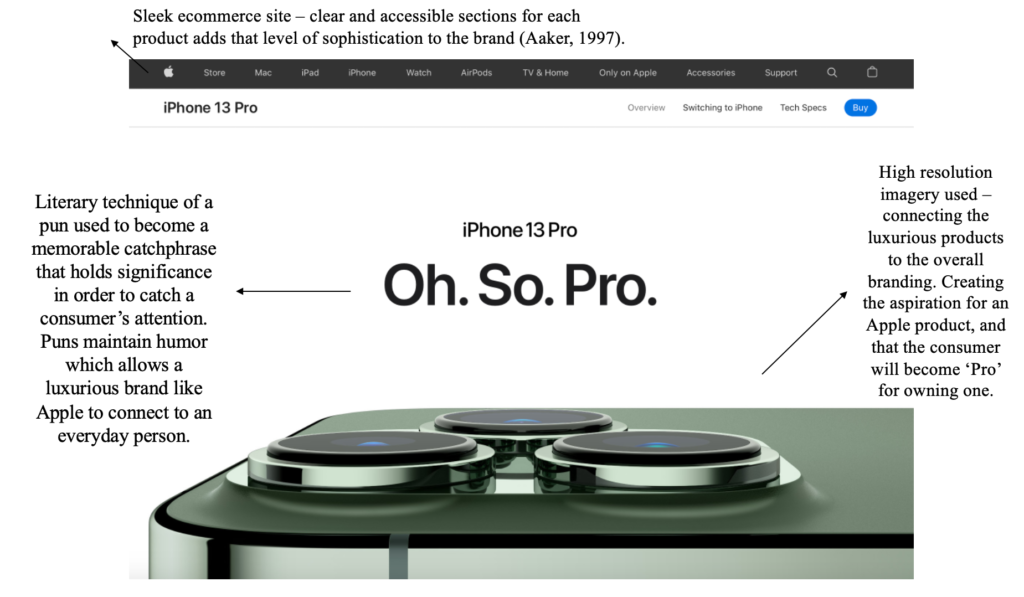In contemporary living a brand’s image and their identity have become more important than the products they sell, consumers want to buy into a lifestyle, build relationships, and loyalty with a brand and through manipulative marketing this is made possible (Slade-Brooking, 2016). According to Keller (2003) key principles to elevate a brand incorporates marketing communication effectiveness, larger margins, and a decreased vulnerability to marketing crises and competition. Put into practice said principles create equity, working alongside the brand personality framework by Aaker (1997) a tailor-made strategy is produced to underpin the unique brand values and needs of the consumer. Further research from Stine (2014) shows the fundamental qualities of a branding programme embrace a simple idea, a focused outlook, differentiation and above all to be consistent but patient to see long term effects.

To survive scrutiny a brand must address consumer’s needs and desires, which Apple are successfully committed to. Jony Ive joined the company in 1992 as lead product designer, creating consistent, customised products that expressed individualisation inevitably creating a tribe around the brand (Abushaeva et. al, 2015). The sleek product design reflects the consistency in Apple’s branding, the logo, name, and interlinked advertising promote brand characteristics of sophistication and excitement to build the Apple brand society (Aaker, 1997; Abushaeva et. al, 2015). Creating a memorable reputation with high value allows a brand to survive controversy, Apple had an unimaginative period in the late 1990’s before Steve Jobs returned but the strong brand image and personality allowed exciting and innovative success to continue (Aaker, 2014).
Reference List
Aaker, J.L., 1997. Dimensions of brand personality. Journal of marketing research, 34(3), pp.347-356. (Accessed: 11 April 2022).
Abushaeva, M.E., Kovaleva, E. and Rakhimov, T.R., 2015. Application of consumer concept in the Apple Company. Journal of Economics and Social Sciences, (6), p.4. (Accessed: 11 April 2022).
Keller, K.L., 2003. Understanding brands, branding, and brand equity. Interactive marketing, 5(1), pp.7-20. (Accessed: 11 April 2022).
Slade-Brooking, C., 2016. Creating a brand identity: a guide for designers. Hachette UK. (Accessed: 11 April 2022).
Stine, G., 2013. The nine principles of branding. Polaris (Ultimo accesso: 30 Dicembre 2014). http://www. polaris-inc. com/assets/pdfs/9_principles_of_branding. pdf. (Accessed: 11 April 2022).
